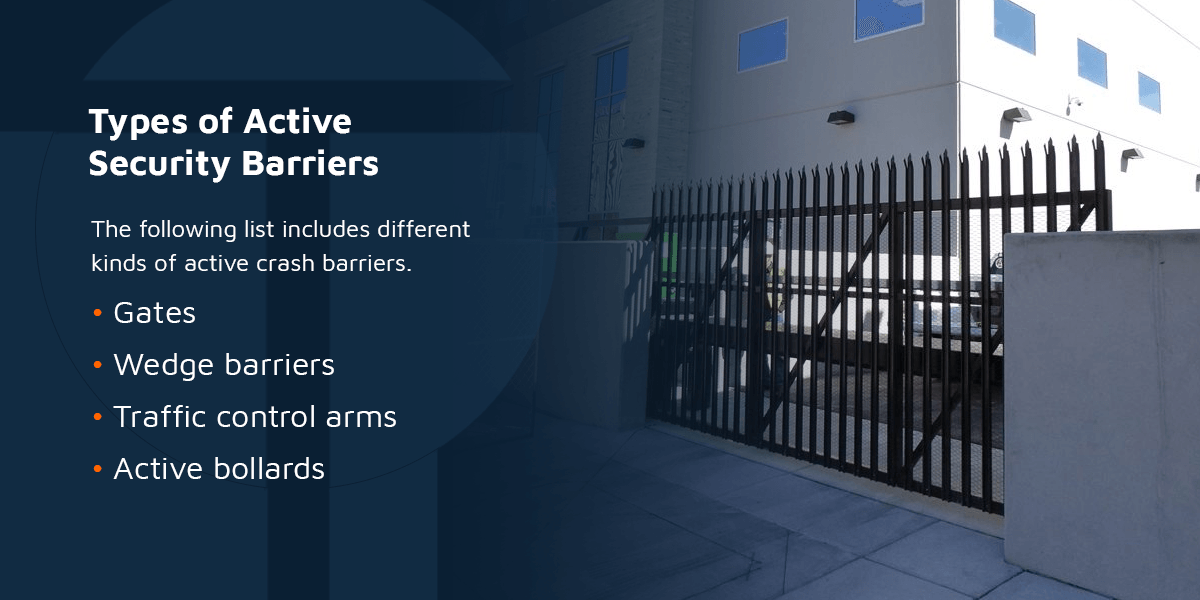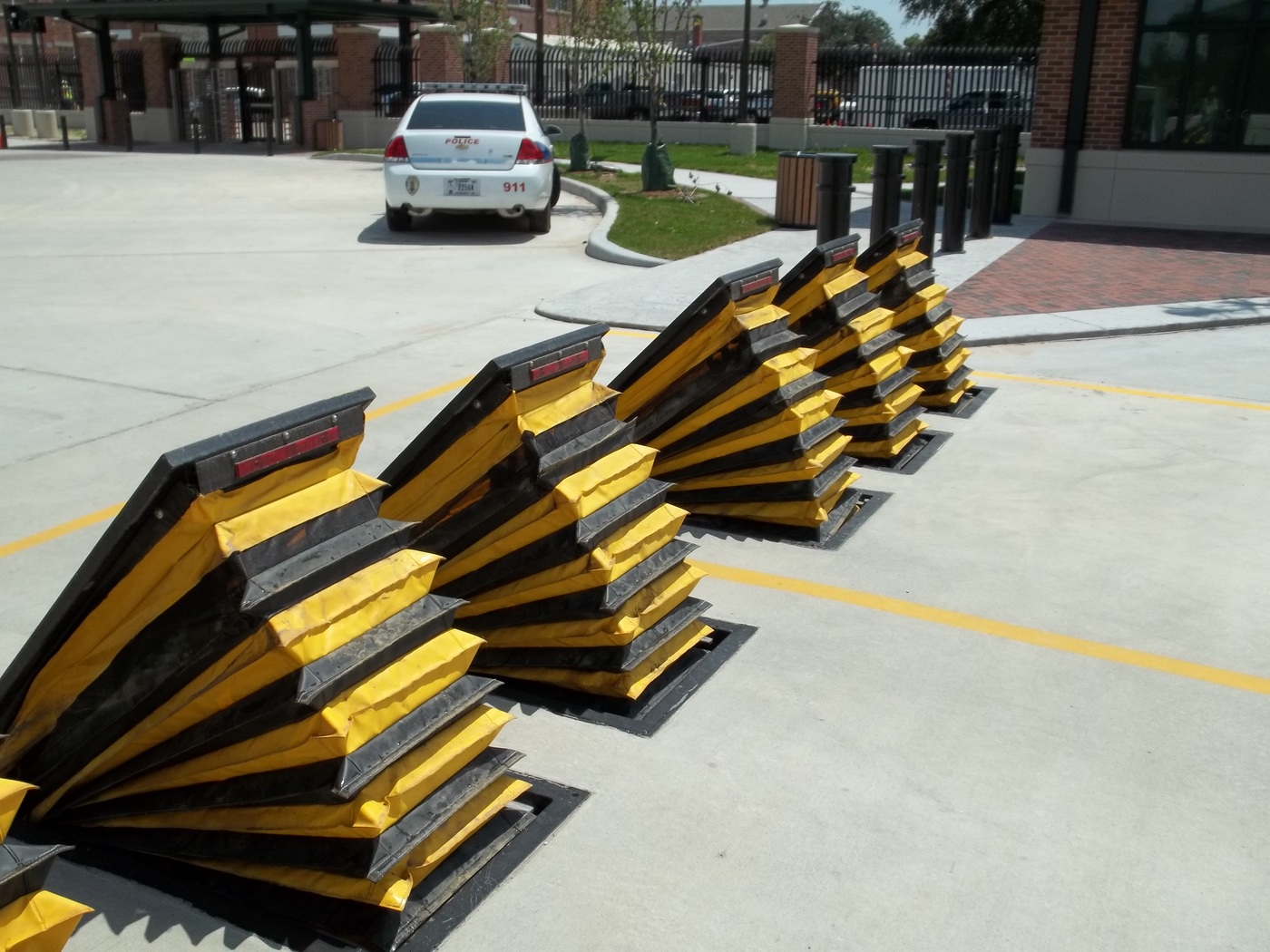The 4-Minute Rule for Wedge Barriers
Getting My Wedge Barriers To Work
Table of ContentsEverything about Wedge BarriersGetting My Wedge Barriers To Work

Get This Report on Wedge Barriers
The staying pressure used to
the cam camera deploy the wedge plate 16 may might provided by an electromechanical actuator 84 or other actuator. The springtime assembly 54 and the actuator 84(e. Wedge Barriers. g., electromechanical actuator)may operate together to equate the camera and raise the wedge plate 16.
As discussed above, the spring assembly 54 puts in a continuous pressure on the camera, while the electromechanical actuator might be regulated to apply a variable pressure on the web cam, therefore enabling the lifting and lowering( i. e., releasing and retracting )of the wedge plate 16. In certain personifications, the constant force used by the springtime assembly 54 may be adjustable. g., electromechanical actuator) is disabled. As will be valued, the spring assembly 54 might be covered and shielded from particles or various other aspects by a cover plate(e. g., cover plate 68 received FIG. 4) that may be significantly flush with the elevated surface area 38 of the structure 14. As stated over, in the released setting, the wedge plate 16 serves to block gain access to or travel beyond the barrier 10. The barrier 10(e. g., the wedge plate 16 )may obstruct pedestrians or vehicles from accessing a home or pathway. As talked about over, the obstacle 10 is connected to the anchor 30 protected within the foundation 14,

front braces 71. As an outcome, the affiliation settings up 72 might pivot and revolve to make it possible for the collapse and expansion of the affiliation settings up 72 throughout retraction and release of the bather 10. The affiliation settings up 72 reason motion of the wedge plate 16 to be restricted. If a car is traveling in the direction of the deployed wedge plate 16(e. For example, in one condition, the safety and security legs 86 may be prolonged throughoutmaintenance of the barrier 10. When the security legs 86 are deployed, the safety legs 86 sustain the weight of the wedge plate 16 versus the surface 12. Therefore, the lifting system 50 may be deactivated, serviced, removed, changed, and so forth. FIG. 5 is partial perspective sight of an embodiment imp source of the surface-mounted wedge-style obstacle 10, highlighting the camera 80 and the webcam surfaces 82 of the training system 50. Specifically, 2 webcam surfaces 82, which are described as lower cam surface areas 83, are positioned listed below the webcam 80. The reduced camera surfaces 83 might be taken care of to the surface 12 (e. For instance, the lower cam surface areas 83 and the mounting plate 85 might develop a single item that is secured to the support 30 by bolts or other mechanical bolts. Furthermore, two web cam surface areas 82, which are referred to as top camera surface areas 87, are positioned over the cam 80 and combined to (e. In other embodiments, stepping in layers or plates may be positioned between the surface area 12 and the lower cam surface areas 83 and/or the wedge plate 16 and the top web cam surfaces 87 As mentioned above, the web cam
80 equates along the web cam surfaces 82 when the wedge plate 16 is lifted from the retracted setting to the released position. Furthermore, as mentioned above, the springtime setting up 54 (see FIG. 3 )may supply a pressure acting on the camera 80 in the direction 102 through springtime pole 58, which might decrease the pressure the electromechanical actuator 84 is called for to apply to the camera 80 in order to actuate and lift the wedge plate 16. 1 )to the deployed placement(see FIG. 4). As shown, the webcam 80 consists of track wheels 104(e. g., rollers), which call and translate along the webcam surface areas 82 throughout procedure.